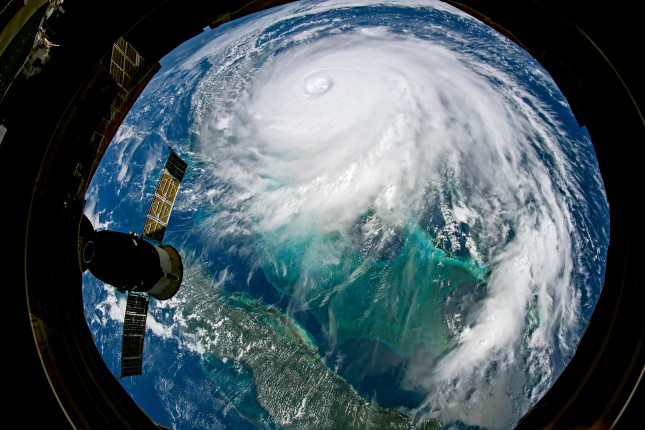-
Foresight for Action | Improving Predictive Capabilities for Security Risks Related to Extreme Weather Events

Evidence that extreme weather, water, and climate events pose critical security risks to the U.S. homeland, national security, and global stability has been mounting in recent years. From destabilizing droughts in Africa to devastating hurricanes and flooding in the United States, we are clearly seeing an increase in not only the frequency and severity of these events, but also their physical, social, and economic impacts.
Extreme weather events that are becoming more common include sudden, high impact incidents, such as coastal flooding, hurricanes, storm surges, bush fires and heat waves; as well as slow-onset events with persistent impacts, such as drought. These events can compound other complex threats, producing shocks, stresses, or “black swan” events. As noted in Syria, Yemen, and elsewhere, water disruptions can act as a “threat multiplier” for political instability and civil conflict. Unless proactively addressed, these compounding risks will lead to increased stress on military operations and installations within the United States and internationally, and ratchet up pressure for crisis-based actions, potentially at the expense of long-term national security interests.
Pathways to Increased Tensions
The National Research Council (NRC) and the National Intelligence Council (NIC), among others, have outlined the national security implications of current risks and anticipated environmental changes. Climate-linked security risks for the United States will emerge primarily from extreme weather events and the exacerbation of wide-ranging security challenges. The NIC outlined six potential pathways by which climate change and its resulting effects will pose wide-ranging national security challenges for the United States and other countries over the next 20 years. These include: threats to the stability of countries, heightened social and political tensions, adverse effects on food prices and availability, increased risks to human health, negative impacts on investments and economic competitiveness, and potential climate discontinuities and secondary surprises.
The driving forces of national security concerns include geostrategic competition and competing spheres of influence; demographic shifts, including migration; and, interoperability and coordination with regional allies. Unless we take preventative measures, the six challenges identified by the NIC will increase stress on U.S. military planning, operations, and installations; increase volatility in financial and commodity markets; and increase the likelihood of crisis events that could push the United States to compromise long-term national security interests.
Many so-called climate “hotspots” around the world, in which two or more of the six challenges outlined by the NIC exist, demonstrate fragility, lack the capacity to address water scarcity, and suffer from reduced soil moisture and quality. As extreme weather events interact with existing fragility, regional conflicts, state failure, and civil unrest are potential outcomes. These disruptive events can directly impact U.S. national security interests and prevent countries from working on priorities that contribute to their development and long-term stability.
The NRC recommends monitoring potential new conflict dynamics with periodic “stress testing” of specific countries and regions, to assess whether they can “handle potentially disruptive conjunctions of climate events and socioeconomic and political conditions.”
Taking Early Action
To take early action to manage or reduce extreme weather-related disruptions, high-level quantitative and qualitative assessments and predictive information are needed. This raises many questions: What is needed to construct early warnings and take proactive action on these issues? What physical, social, and economic impacts may arise from cascading, clustered, or sequential extreme weather events? How can we facilitate coordination between elements of the defense and intelligence community with regional experts and practitioners?
Working with NOAA and the University Corporation for Atmospheric Research, the Wilson Center is developing a framework to improve predictive capabilities for security risks posed by extreme weather events. Early findings of the project identified three main tipping points on which to focus in order to better understand the compound risks posed by extreme weather and water-related events and identify entry points for action: ecosystem vulnerabilities; transnational trends; and political instability within the particular context.
The framework requires alignment and sustained engagement across the U.S. government and increased and better coordination between decision-makers, researchers, and practitioners. And it requires a comprehensive understanding and early warning of the risks facing a region. As forthcoming case studies on Pakistan, the Horn of Africa, and the Caribbean illustrate, the security risks posed by extreme weather events can be understood and prepared for when assessed in the context of existing environmental, transnational, and political vulnerabilities.
Sherri Goodman is a Senior Fellow at the Wilson Center and the Center for Climate & Security, and a former Deputy Undersecretary of Defense (Environmental Security).
Roger S. Pulwarty is the Senior Scientist in the National Oceanic and Atmospheric Administration (NOAA) Physical Sciences Division in Boulder, Colorado.
Lauren Risi is the Project Director for the Wilson Center’s Environmental Change & Security Program.
Sources: National Intelligence Council, National Research Council, The Washington Post, United Nations High Commissioner for Refugees.
Photo Credit: Hurricane Dorian Seen From Aboard the Space Station, Sept. 2019. Photo by Christina Koch, courtesy of NASA.
 A Publication of the Stimson Center.
A Publication of the Stimson Center.



